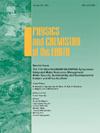Reconstruction of subsurface potential hydrocarbon reservoirs through 3D seismic automatic interpretation and attribute analysis
IF 3
3区 地球科学
Q2 GEOSCIENCES, MULTIDISCIPLINARY
引用次数: 0
Abstract
Seismic texture is an emerging concept in the field of exploration geophysics that has not been adequately understood. Despite the recent development of several approaches and algorithms, each of them has exhibited certain limitations. This study aims to utilize 3D seismic automatic interpretation to reconstruct the subsurface potential hydrocarbon reservoirs. Our goal is to unveil the intricate structures in the subsurface of the F-3 block at the offshore region of the North Sea. The research involves the use of a relative geological model (RGT) framework to analyze seismic data, determine the presence of hydrocarbon deposits, and investigate trap structures. With high-density stratal slicing, we have linked the key surfaces to significant events and manipulated the data to enhance data recognition, detection, and characterization of detailed geological features. The uniqueness of the method allows for a faster and more efficient analysis process. The research aims to analyze 3D seismic data, gain insights into the local petroleum system, and assess seismic attributes to identify features. The results underscore the value of conducting a comprehensive analysis of geological complexities, which has made significant contributions to the fields of geophysics and hydrocarbon exploration. The methodology used in this study provides valuable insights for future research and evaluation endeavors. Ultimately, the new approach Streamline your workflow by dedicating more attention to incorporating expertise in the depositional history of the basin.
通过三维地震自动判读和属性分析重建地下潜在油气藏
地震纹理是勘探地球物理领域的一个新兴概念,尚未得到充分理解。尽管近年来开发了多种方法和算法,但每种方法和算法都有一定的局限性。本研究旨在利用三维地震自动解释重建地下潜在的油气藏。我们的目标是揭示北海近海地区 F-3 区块地下错综复杂的结构。研究涉及使用相对地质模型(RGT)框架分析地震数据、确定是否存在油气藏以及调查陷落结构。通过高密度地层切片,我们将关键表面与重要事件联系起来,并对数据进行处理,以加强数据识别、探测和详细地质特征的描述。该方法的独特性使得分析过程更快、更高效。该研究旨在分析三维地震数据,深入了解当地石油系统,评估地震属性以识别特征。研究结果凸显了对地质复杂性进行综合分析的价值,为地球物理学和油气勘探领域做出了重大贡献。本研究采用的方法为未来的研究和评估工作提供了宝贵的见解。最终,新方法 通过投入更多的注意力,将盆地沉积史方面的专业知识融入其中,从而简化工作流程。
本文章由计算机程序翻译,如有差异,请以英文原文为准。
求助全文
约1分钟内获得全文
求助全文
来源期刊

Physics and Chemistry of the Earth
地学-地球科学综合
CiteScore
5.40
自引率
2.70%
发文量
176
审稿时长
31.6 weeks
期刊介绍:
Physics and Chemistry of the Earth is an international interdisciplinary journal for the rapid publication of collections of refereed communications in separate thematic issues, either stemming from scientific meetings, or, especially compiled for the occasion. There is no restriction on the length of articles published in the journal. Physics and Chemistry of the Earth incorporates the separate Parts A, B and C which existed until the end of 2001.
Please note: the Editors are unable to consider submissions that are not invited or linked to a thematic issue. Please do not submit unsolicited papers.
The journal covers the following subject areas:
-Solid Earth and Geodesy:
(geology, geochemistry, tectonophysics, seismology, volcanology, palaeomagnetism and rock magnetism, electromagnetism and potential fields, marine and environmental geosciences as well as geodesy).
-Hydrology, Oceans and Atmosphere:
(hydrology and water resources research, engineering and management, oceanography and oceanic chemistry, shelf, sea, lake and river sciences, meteorology and atmospheric sciences incl. chemistry as well as climatology and glaciology).
-Solar-Terrestrial and Planetary Science:
(solar, heliospheric and solar-planetary sciences, geology, geophysics and atmospheric sciences of planets, satellites and small bodies as well as cosmochemistry and exobiology).
 求助内容:
求助内容: 应助结果提醒方式:
应助结果提醒方式:


